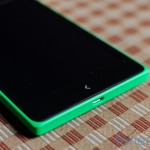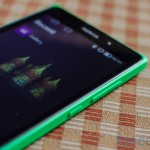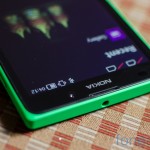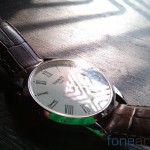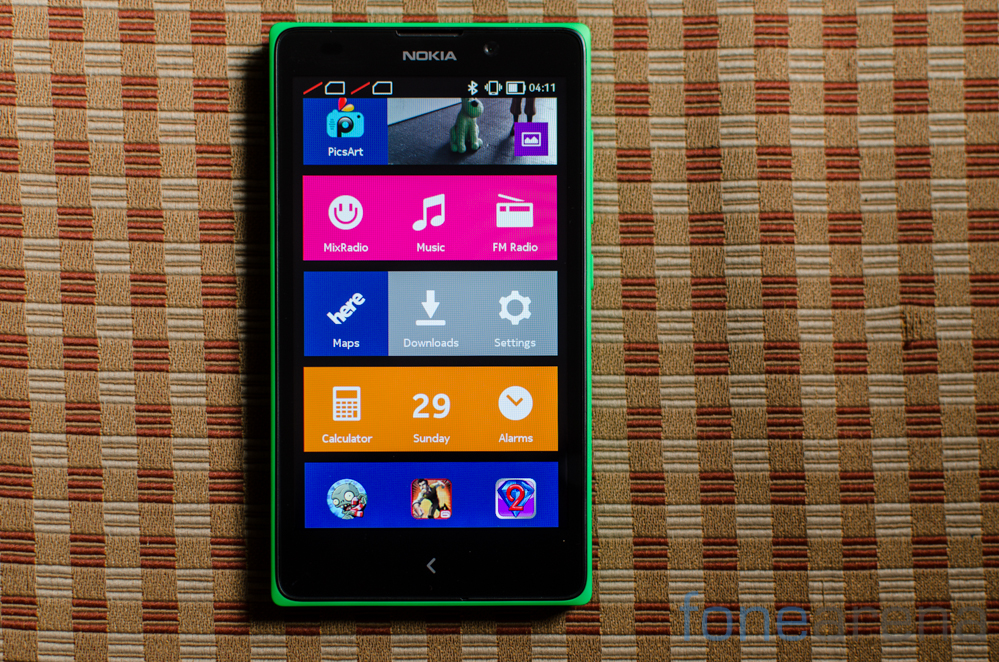
When we first reviewed the Nokia X, we called it a geek’s dream considering it married the Finnish company’s legendary hardware with a much more accepted and liked operating system. As we found out in our Nokia X review, the actual implementation fell well short of our expectations. With the Nokia XL, the company took yet another shot at gathering a bigger foot hold in the critical entry level segment in emerging markets like India. Will this phone meet the same fate as the Nokia X? Find out in our review.
Specifications
- 5inch WVGA display ( 480×800 pixels)
- 1GHz dualcore Qualcomm Snapdragon S4 Play
- 768MB RAM
- microSD card support up to 32GB
- 5MP auto focus camera with Flash and 2MP front camera
- 2000mAh battery
- OneDrive support
- Uses Microsoft’s Cloud instead of Google Cloud for app data
- Unique Nokia fastlane experience
- Dual SIM
- 3G, WiFi, Bluetooth, GPS with A-GPS
- Here Maps
Hardware
It is easy to dismiss the Nokia XL as a larger Nokia X and to some extent this is true. Peer deep enough however and you notice subtle changes and improvements that aim at a better, might we say more polished experience despite being marketed at a bargain basement price. The basic design language remains the same across hardware.
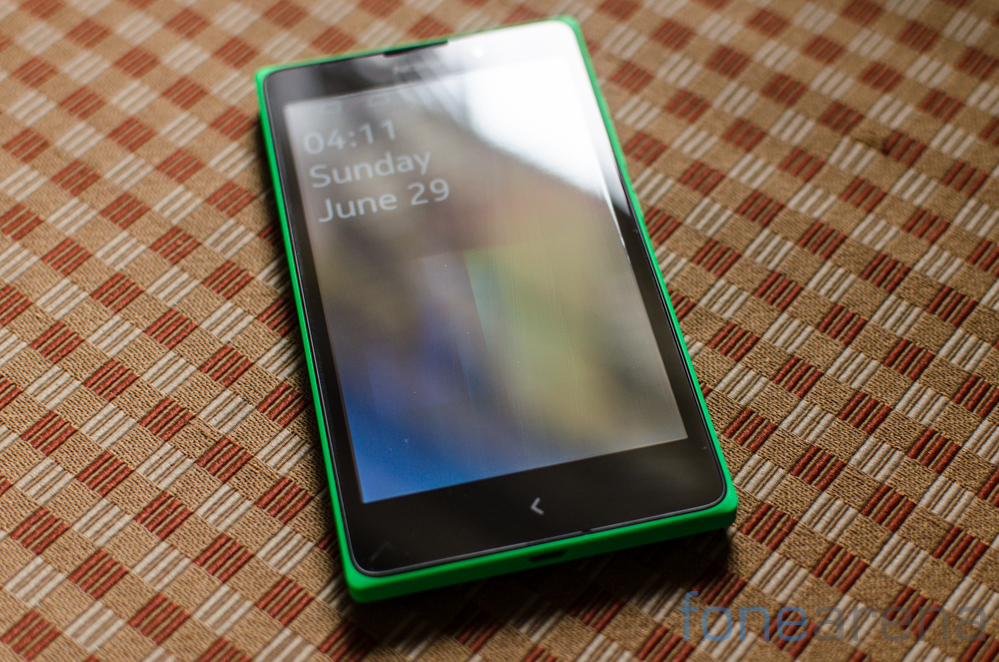
The Nokia XL is a chunky device. From the front, you spot a flat black glass with rounded corners while the rest of the polycarbonate hardware is in a range of colors that forms a rim around the fascia. This is a big device and the large bezels do it no favors either.
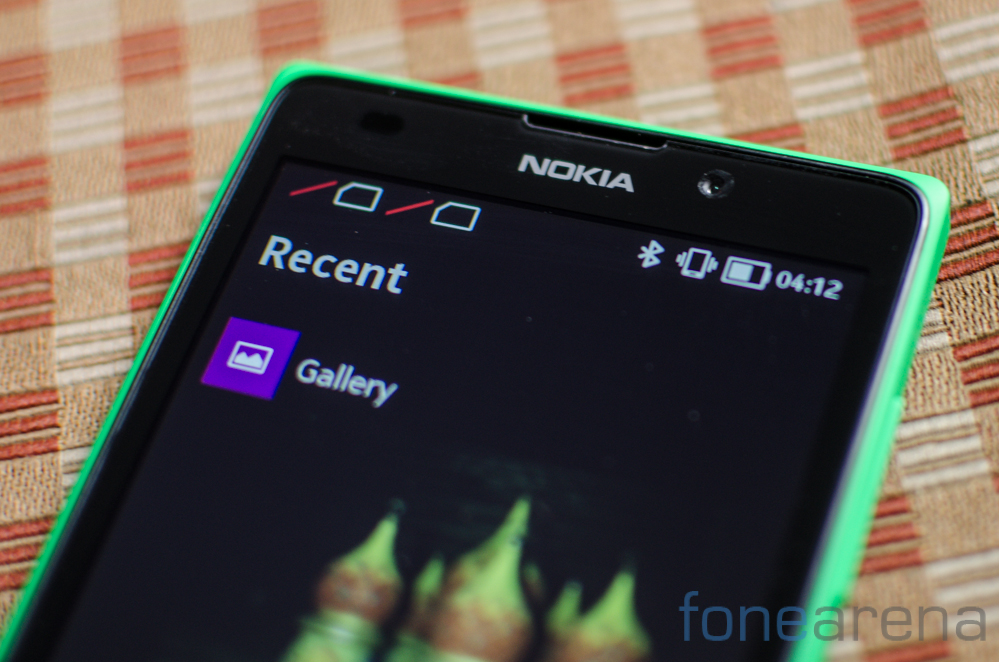
Below the screen is a single capacitive back button. Unlike most other Android devices, Nokia eschews the use of standardized buttons for a single back button and onscreen gestures which are ‘optimized’ for their Fastlane UI. Above the display is a 2MP camera. Next to it are the proximity and ambient light sensors as well as the earpiece as you’d expect.
Buttons around the display are minimal and include the volume rocker on the right side. The power key is suitably located below it and offers just enough tactile feedback. You may also double tap the display to wake up the phone. Visible ports include the 3.5mm audio jack at the top while a micro USB port is located at the bottom.
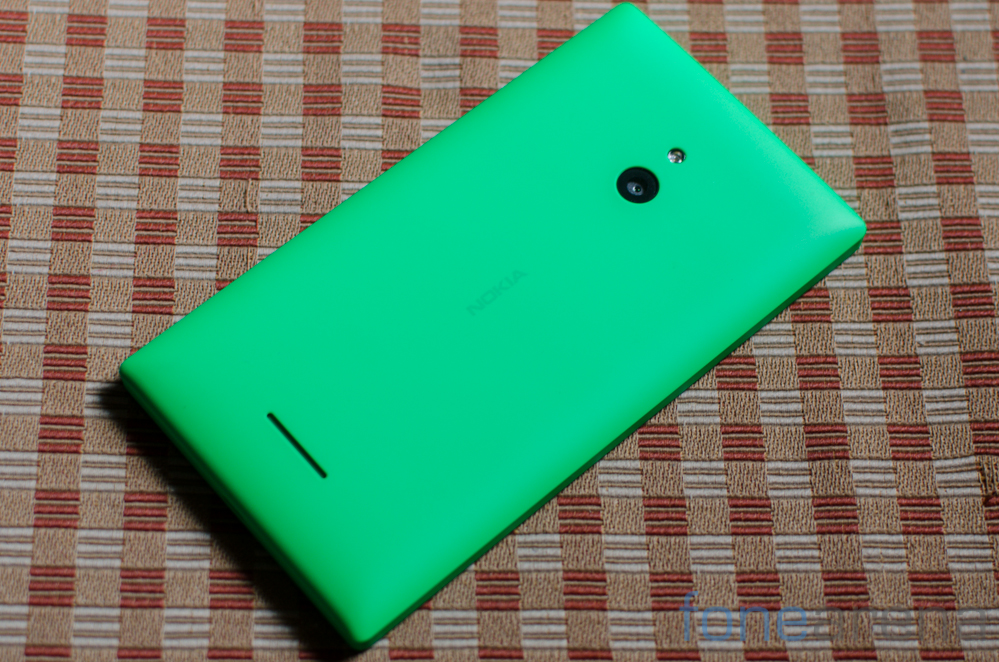
The back of the Nokia XL is made of the same polycarbonate material that we’ve seen on several other devices by the company. The soft touch polycarbonate feels fantastic in the hand and is clearly very high quality. Available in a range of colors, the back panels are bright and vibrant and definitely not for someone looking at getting a subdued looking handset. A 5MP AutoFocus capable camera is at the back with a single LED flash while under the cover are dual SIM card slots and the 2,000 mAh battery.

The Nokia XL measures 141.4 x 77.7 x 10.9mm which makes it bigger than most devices in its category. Add to that the fact that the phone weighs an astonishing 190grams and you realize that the phone is a veritable beast when it comes to construction. The dimensions of the phone dictate solid construction and the ability to easily survive being thrown around however you might want to get a feel for the phone as this is not the device that you’ll want to stick into the pockets of your skinny jeans!
Software
The Nokia X and XL run on the same platform and there’s little that has changed between the two devices as far as the software experience is concerned. While the phone is indeed based on Android, it is a far cry from your standard Android fare. Based on AOSP, Nokia has completely forked the operating system to create an interface that takes the best from the Windows Phone, Asha and Android interfaces to create a mashup of Live tiles, Fast Lane and a solid notifications system.
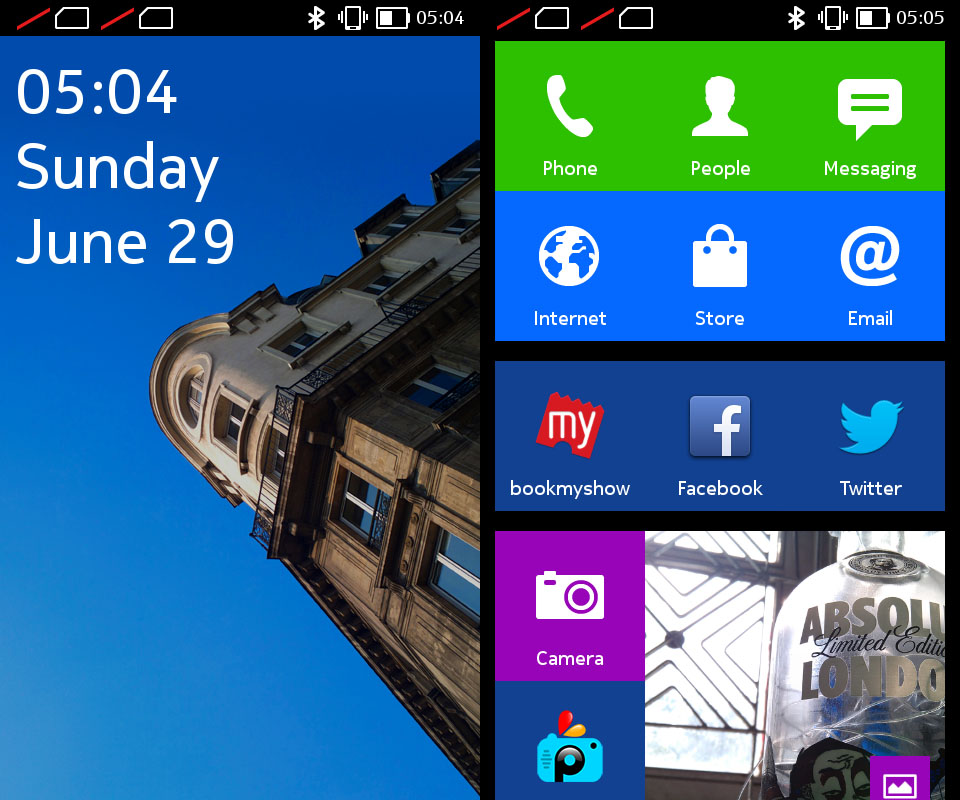
The Nokia X Software Platform is essentially AOSP Android Jellybean that has been stripped of all Google functions which have been replaced by Microsoft’s cloud based offerings. This also means that you do not get access to the Google Play Store and also cannot install applications dependent on the Play Services Framework.
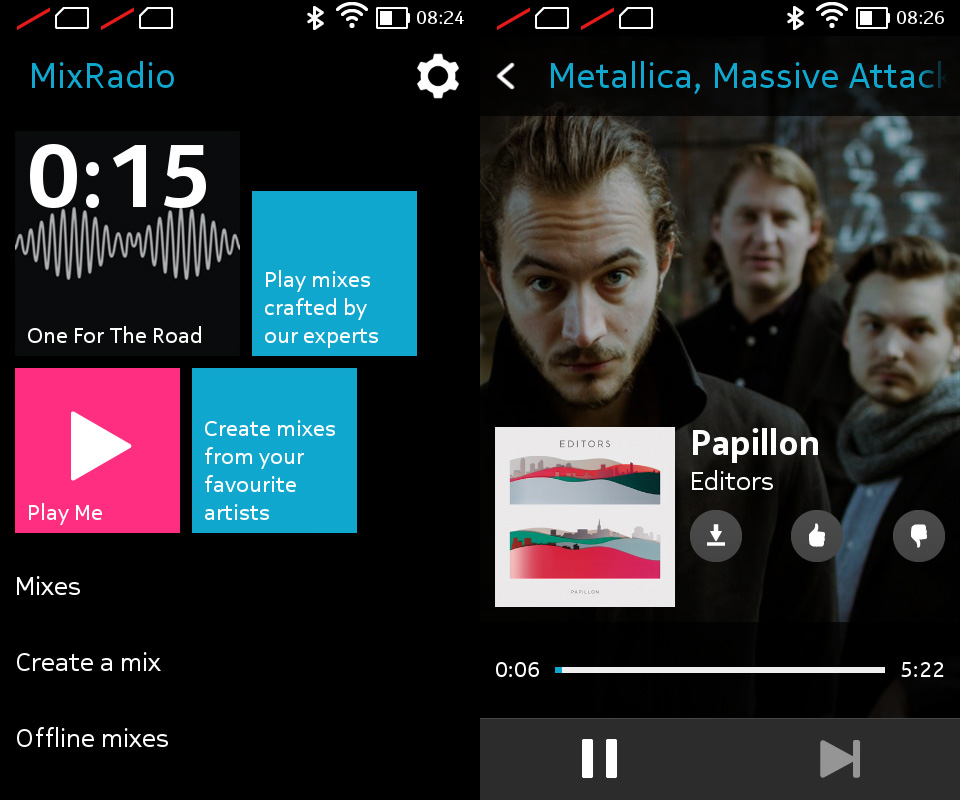
The Fastlane interface has been derived from what was first seen on Nokia’s Asha series of products. The single scrollable pane is a smorgasbord of icons and widgets with seemingly no thought behind arrangement. Scrolling to the right introduces you to the multitasking pane which marks the end of the interface as such. This is where you’ll see all your recent applications, calendar events, messages and social posts. You can pull down the notification shade to get access to quick controls. We feel that Nokia has gone a bit too far in terms of customization to the point of making the interface rather lacking.
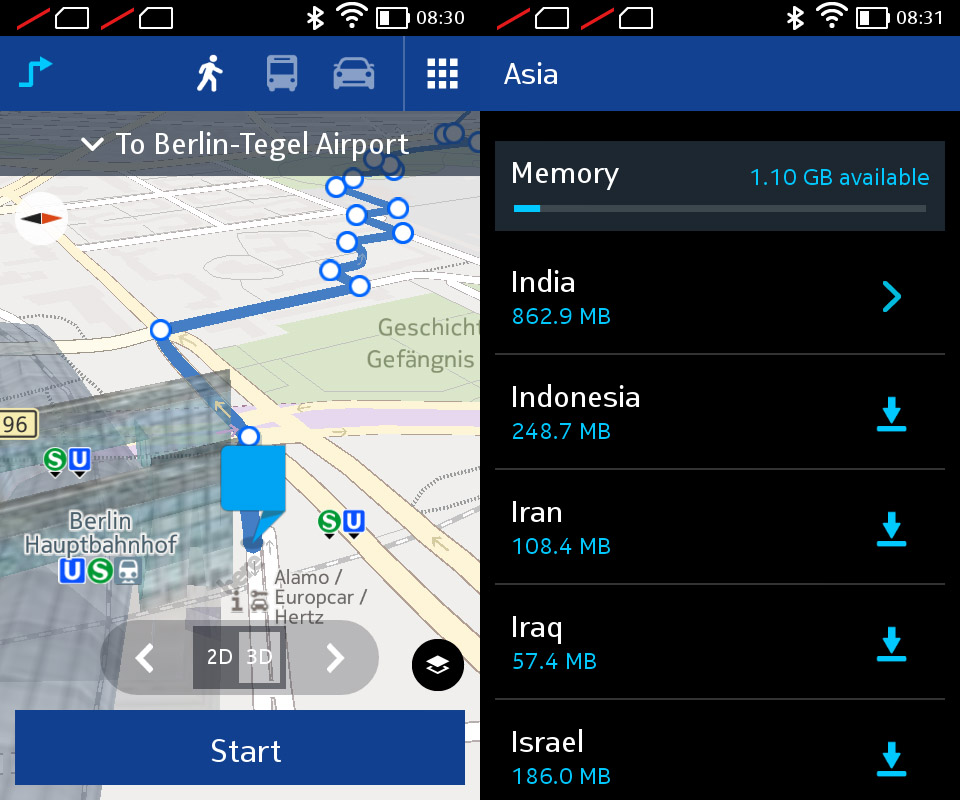
Nokia exclusive applications like HERE Maps and and Mix Radio bring added functionality that to some extent justifies not buying into a more conventional Android product. Both the applications provide a uniquely ‘Nokia’ experience with the former giving users access to offline mapping and the ability to download country wide maps, offline. MixRadio gives users access to curated music playlists based on genres and artists.
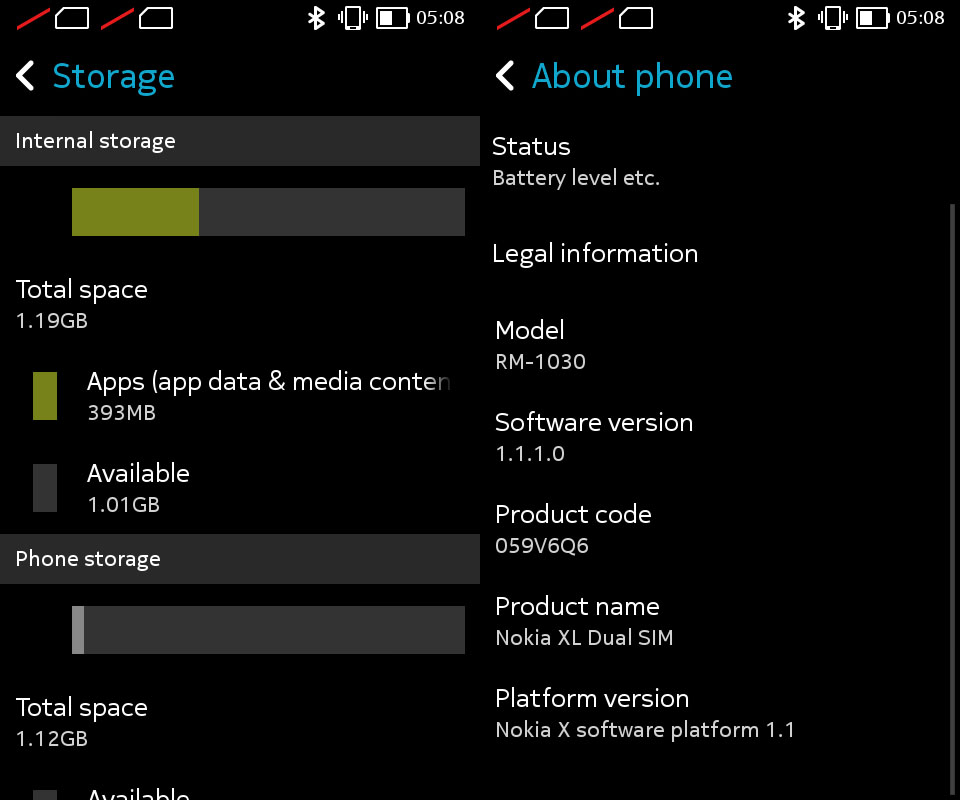
The core operating system is Android 4.1.2 while the phone runs on Nokia Platform 1.0.1 UI. The phone has already been deemed somewhat redundant on the software front as it will not be getting the Platform 2.0 update. The 2.0 update’s visual improvements include a new quick settings menu, an app list and a multitasking switcher that will take advantage of the hardware home button and multitasking key that will be placed on newer handsets. We stand by what we said in our Nokia X review, this is not the Android phone that you’re looking for. The Nokia X brings a compelling software platform that might appeal to first time smartphone users but we doubt it’ll do the job for anyone else.
Performance
Powering the Nokia XL is a 1Ghz Snapdragon S4 Play Dual Core processor with the Adreno 203 GPU. This particular chipset pairs two Cortex A5 cores which means its hardly a scorcher. There’s 768MB of RAM on board and 4GB of storage of which just about 1.2GB is available. The phone will likely run out of storage if you try to install high end games which we wouldn’t recommend anyway as the phone isn’t really up to the task of running those. Compared to the Nokia X, the extra RAM comes as a lease of life to the phone but additional memory can only do that much. For what its worth, the not-so-infrequent launcher crashes have reduced substantially and the interface itself is slick and smooth for the most part. Real life performance is average at best. Applications undeniably take a second or two to start up and there are lags and slow downs quite often. The browsing experience too was sub-par using Nokia’s custom browser. Coming to synthetic benchmarks, the phone predictably does very poorly. In most cases, it is only the Nokia X that is placed below it which doesn’t say much for the performance of the phone. Devices like the Moto G which aren’t too far ahead in the hierarchy run circles around the Nokia X’s performance especially in terms of GPU capabilities.
Display
The Nokia X sports a 5 inch IPS LCD screen. This has a resolution of 800 x 480 pixels which results in a pixel density of 187ppi. It is a low cost phone and keeping that in mind, the screen isn’t too bad. Black levels are surprisingly poor and the low resolution results in jagged edges around text. We found contrast levels to be serviceable but not good though viewing angles were decent. Sunlight visibility isn’t too good because of how reflective the screen is.
 The display includes the Glance Screen feature seen on higher end Lumia devices. This allows the display to be on in a low power state to display vital information. You can also double tap the screen to unlock the phone. We’d have been fairly satisfied with the panel in use here if it were not for competitors like Motorola who have managed to equip the likes of the Moto G with a higher resolution and simply speaking, a better screen.
The display includes the Glance Screen feature seen on higher end Lumia devices. This allows the display to be on in a low power state to display vital information. You can also double tap the screen to unlock the phone. We’d have been fairly satisfied with the panel in use here if it were not for competitors like Motorola who have managed to equip the likes of the Moto G with a higher resolution and simply speaking, a better screen.
Camera
The camera hardware on the Nokia XL is a marked improvement over the one spotted on the X and X+ but that isn’t really saying much. There’s a 5MP module over at the back while the front facing camera is a 2MP shooter. You also get a single LED flash.
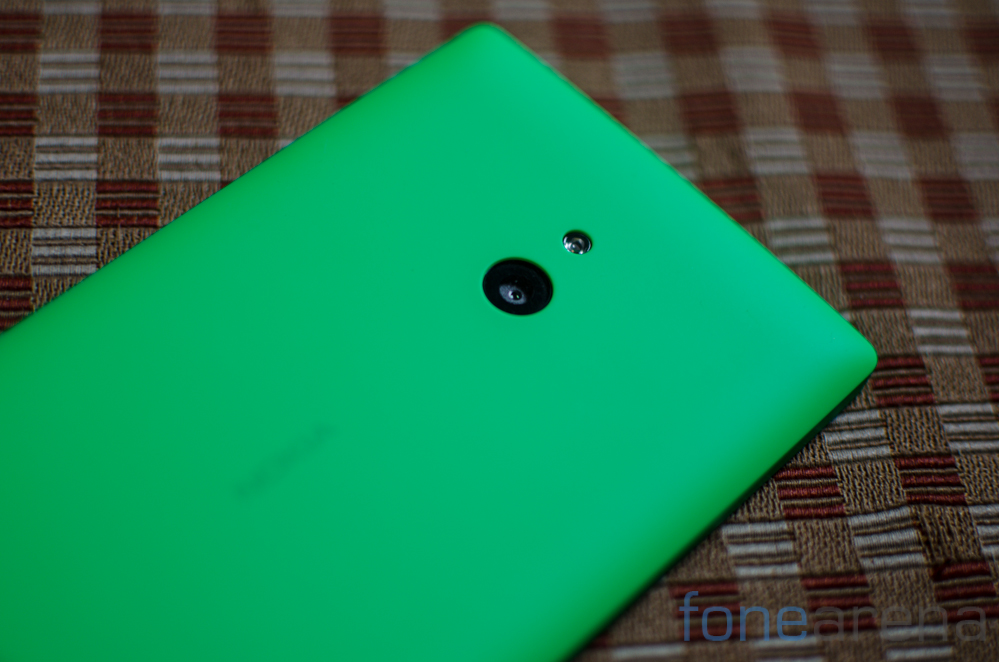
The interface is minimal and includes options for manipulating the flash, adjusting whitebalance and exposure. There’s also a range of saturation, ISO related settings available under a sub menu which we doubt too many people would bother with.
Photo aren’t as bad as we expected with the camera capturing a decent amount of details but the extra strong noise reduction and sharpening was a draw back. As long as lighting is good, it is possible to get some usable shots out of the 5MP sensor but it will be best to temper your expectations in this regard. Videos are captured at a FWVGA resolution which is rather woeful for a 2014 device. Add to that the strong compression and you are left with a phone that isn’t particularly useful for video capture.
Connectivity & Battery Life
As we mentioned earlier, the Nokia XL is a dual SIM phone that supports Quad Band GSM/EDGE on both slots. Only the first SIM card slot supports 3G connectivity with speeds of up to 7.2Mbps HSDPA. Users also get WiFi b/g/n, Bluetooth 3.0. A micro USB port is present but it does not support USB OTG or MHL. The microSD card slot can be used to expand storage by up to 32GB while on device storage is limited to 4GB of which 1.2GB is available.
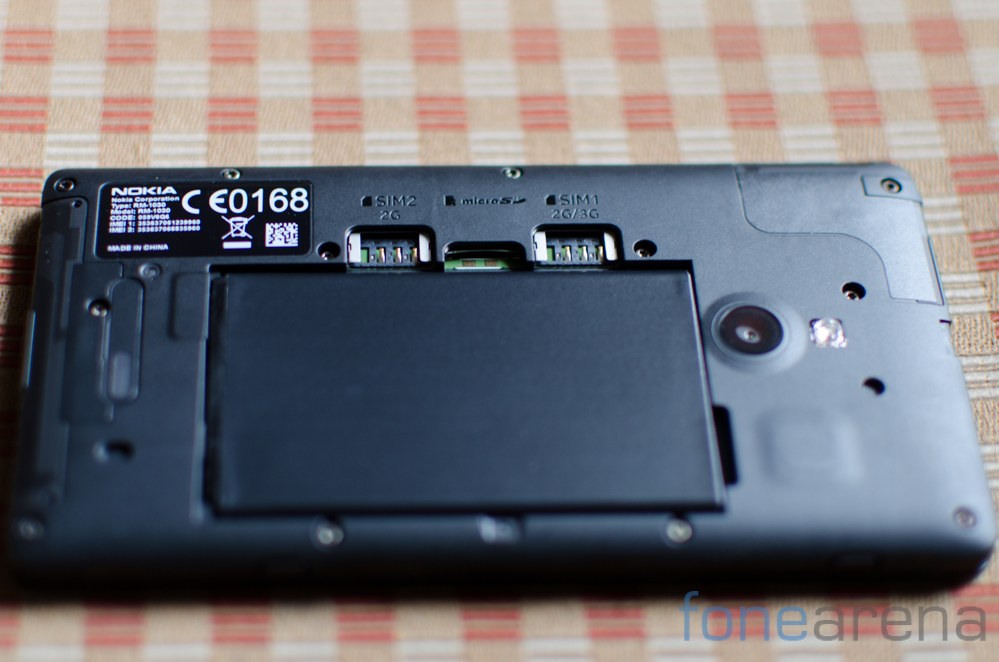
The battery is a 2,000 mAh pack which is an improvement over the 1500 mAh unit in the Nokia X. Battery is life is above average with the phone lasting long enough to get through a day of usage. Continuous video play back time wasn’t the best with the phone switching off at the 5 hours 45 minutes mark which is about enough to get you through 2 movies on a long flight. Depending on your use case, you should be able to get 1.5 to 2 days of usage out of the phone with an hour or two of calling, about an hour of music playback and half an hour of web surfing.
Conclusion
The Nokia XL is the best of the bunch when it comes to Nokia / Microsoft’s Android offerings but it isn’t enough to be a threat to their Lumia line. Is this what the company intended? Hard to say but looking at competing Android devices, it is quite difficult to recommend the device.
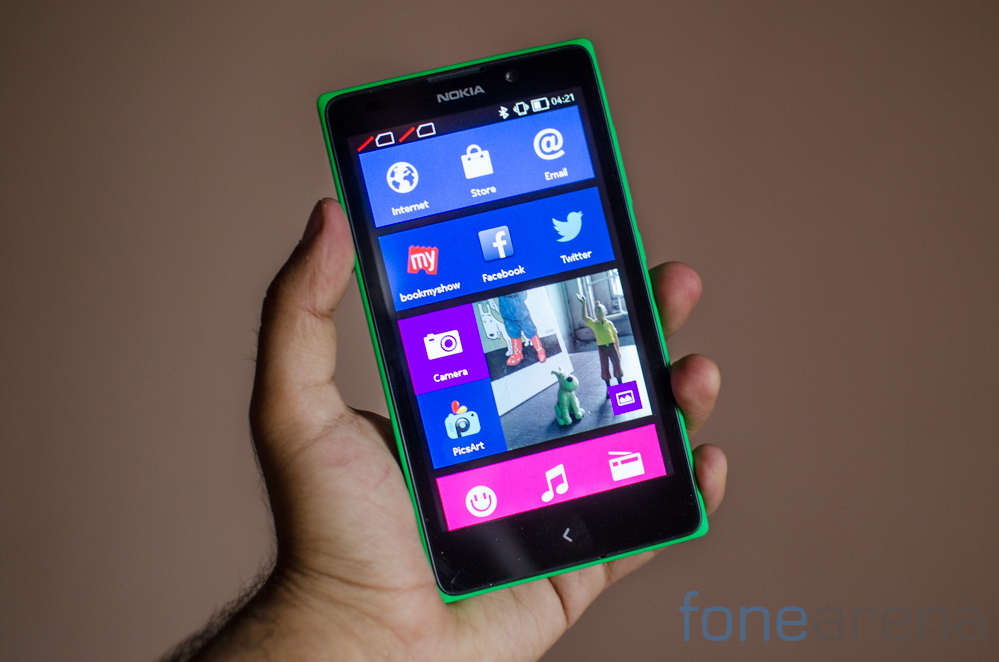
The competition offers better performing phones that offer the full Google experience and bring quality construction that is good enough if not quite as good as Nokia’s . Would we recommend the phone? Not really but if all you want is a simplified experience with a large screen, quality hardware and access to Android applications, this could be a safe bet. We would also suggest taking a look at Nokia’s own Lumia 625 or the Moto G which offer better hardware at a not much higher price point.
Pros
- Hardware quality
- Nokia exclusive apps
- Camera
Cons
- Display
- No Google services
- Limited storage

